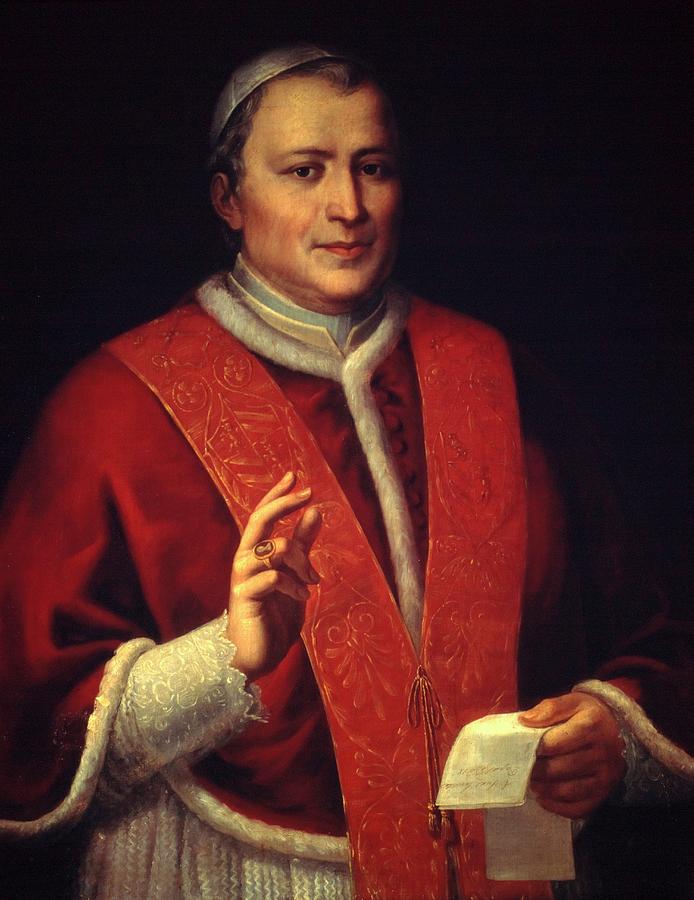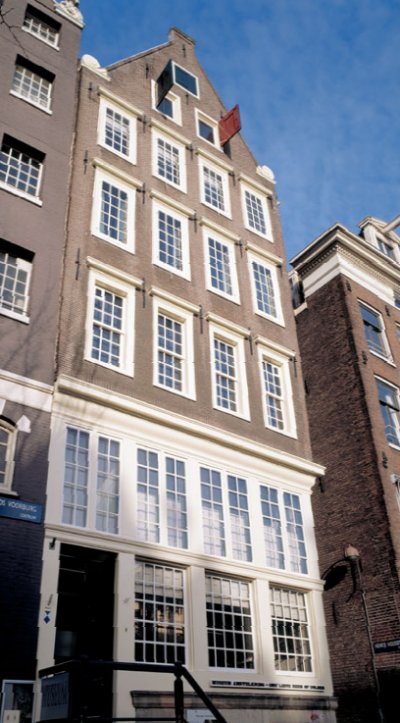|
Reestablishment Of The Episcopal Hierarchy In The Netherlands
On 4 March 1853, Pope Pius IX restored the episcopal hierarchy in the Netherlands with the papal bull ''Ex qua die arcano'', Translated in after the Dutch Constitutional Reform of 1848 had made this possible. The re-establishment of the episcopal hierarchy led to the protest in 1853. Disestablishment of the Catholic Church After becoming head of state of the Spanish Empire (including the Low Countries), crusading Habsburg king Philip II of Spain reorganised the Dutch dioceses in 1559. Archdiocese of Utrecht (historic), Utrecht became an archdiocese and together with the suffragan dioceses of Diocese of Haarlem, Haarlem (central and North Holland), Diocese of Middelburg, Middelburg (Zeeland), Diocese of Deventer, Deventer (Overijssel and Gelderland), Diocese of Groningen, Groningen (Groningen (province), Groningen) and Diocese of Leeuwarden, Leeuwarden (Friesland), they would form the northern ecclesiastical province of Utrecht. Roermond and 's-Hertogenbosch became part of the ... [...More Info...] [...Related Items...] OR: [Wikipedia] [Google] [Baidu] |
Diocese Of Groningen
The Diocese of Groningen-Leeuwarden (; ) is a suffragan Latindiocese of the Catholic Church in the northern part of the ecclesiastical province of the Metropolitan Roman Catholic Archdiocese of Utrecht (covering all the Netherlands). It encompasses the provinces of Groningen, Friesland and Drenthe, as well as the Noordoostpolder, a part of the province of Flevoland. The cathedral episcopal seat is the Saint Joseph Cathedral in the city of Groningen, capital of the province of the same name. One former cathedral remains in Catholic use : the Sint-Maartenskerk, dedicated to Saint Martin, also in Groningen, is now Protestant church; the Sint-Vituskerk, dedicated to Saint Vitus, in Leeuwarden (Friesland province, most of Dutch Frisia) is only rarely frequented by a small community of faithful from an old orphanage. History * Established on 12 May 1559 as Diocese of Groningen / Groningen(sis) (Latin), on territories split off from the then Diocese of Utrecht and Diocese of Munst ... [...More Info...] [...Related Items...] OR: [Wikipedia] [Google] [Baidu] |
Batavian Republic
The Batavian Republic (; ) was the Succession of states, successor state to the Dutch Republic, Republic of the Seven United Netherlands. It was proclaimed on 19 January 1795 after the Batavian Revolution and ended on 5 June 1806, with the accession of Louis Bonaparte to the Kingdom of Holland, Dutch throne. From October 1801 onward, it was known as the Batavian Commonwealth (). Both names refer to the Germanic peoples, Germanic tribe of the Batavi (Germanic tribe), ''Batavi'', representing both the Dutch ancestry and their ancient quest for liberty in their Nationalism, nationalist lore. In early 1795, intervention by the French First Republic, French Republic led to the downfall of the old Dutch Republic. The new republic enjoyed widespread support from the Dutch populace and was the product of a genuine popular revolution. However, it was founded with the armed support of the French Revolutionary Army. The Batavian Republic became a client state, the first of the "sister repu ... [...More Info...] [...Related Items...] OR: [Wikipedia] [Google] [Baidu] |
Clandestine Church
A clandestine church (), defined by historian Benjamin J. Kaplan as a "semi-clandestine church", is a house of worship used by religious minorities whose communal worship is tolerated by those of the majority faith on condition that it is discreet and not conducted in public spaces. ''Schuilkerken'' are commonly built inside houses or other buildings, and do not show a public façade to the street. They were an important advance in religious tolerance in the wake of the Reformation, an era when worship services conducted by minority faiths were often banned and sometimes penalized by exile or execution. History According to historian Benjamin Kaplan, clandestine churches became common in Europe in the wake of the Reformation as a way for governments to permit a degree of religious toleration for minority Christian denominations and Jews. Both political and religious considerations frequently led governments to ban all worship not sanctioned by the state, and in many countries, ... [...More Info...] [...Related Items...] OR: [Wikipedia] [Google] [Baidu] |
Peace Of Münster
The Peace of Münster, signed on 30 January 1648, was a treaty between Philip IV of Spain and the States-General of the Netherlands, Lords States General of the Dutch Republic. Negotiated in parallel to, but not part of, the Peace of Westphalia, under its terms Habsburg Spain, Spain formally recognised the independent Dutch Republic, and ended the Eighty Years' War. Negotiations Negotiations between began in 1641 in the town of Münster, in the Holy Roman Empire. With the initiation of Spanish-Dutch peace talks, Dutch trade with the Levant and the Iberian Peninsula began to flourish. Dutch merchants, benefiting from both the availability of relatively cheap shipping and the cessation of hostilities, soon dominated the markets that had been previously dominated by English traders. Dutch merchants would also benefit from the foreign upheavals of the English Civil War and gain on English trade in their American colonies. While Spain did not recognise the Dutch Republic, it agree ... [...More Info...] [...Related Items...] OR: [Wikipedia] [Google] [Baidu] |
Apostolic Vicar
Apostolic may refer to: The Apostles An Apostle meaning one sent on a mission: *The Twelve Apostles of Jesus, or something related to them, such as the Church of the Holy Apostles *Apostolic succession, the doctrine connecting the Christian Church to the original Twelve Apostles *The Apostolic Fathers, the earliest generation of post-Biblical Christian writers *The Apostolic Age, the period of Christian history when Jesus' apostles were living *The '' Apostolic Constitutions'', part of the Ante-Nicene Fathers collection Specific to the Roman Catholic Church *Apostolic Administrator, appointed by the Pope to an apostolic administration or a diocese without a bishop * Apostolic Camera, or "Apostolic Chamber", former department of finance for Papal administration * Apostolic constitution, a public decree issued by the Pope *Apostolic Palace, the residence of the Pope in Vatican City * Apostolic prefect, the head of a mission of the Roman Catholic Church *The Apostolic See, sometime ... [...More Info...] [...Related Items...] OR: [Wikipedia] [Google] [Baidu] |
Dutch Mission
The Holland Mission or Dutch Mission ( or ') was the common name of a Catholic Church missionary district in the Low Countries from 1592 to 1853, during and after the Protestant Reformation in the Netherlands. History Pre-reformation diocese and archdiocese of Utrecht According to the ''Catholic Encyclopedia'', the founding of the diocese of Utrecht dates back to Francia, when St. Ecgberht of Ripon sent St. Willibrord and eleven companions on a mission to pagan Frisia, at the request of Pepin of Herstal. The Diocese of Utrecht () was erected by Pope Sergius I in 695. In 695 Sergius consecrated Willibrord in Rome as Bishop of the Frisians. George Edmundson wrote, in ''Encyclopædia Britannica'', 1911 edition, that the bishops, in fact, as the result of grants of immunities by a succession of German kings, and notably by the Saxon and Franconian emperors, gradually became the temporal rulers of a dominion as great as the neighboring counties and duchies. John Mason Neale e ... [...More Info...] [...Related Items...] OR: [Wikipedia] [Google] [Baidu] |
Frederik V Schenck Van Toutenburg
Frederik Schenck van Toutenburg ( – 25 August 1580) was the first Archbishop of Utrecht from 1559 to 1580. Prior to Schenck's ministry as archbishop, Utrecht was a bishopric with a succession of sixty bishops. The last bishop of Utrecht, prior to Schenck was George van Egmond. After Schenck's death in 1580, the see would remain vacant until Sasbold Vosmeer assumed the archbishopric in 1602. Biography Frederik Schenk van Toutenburg born around 1503 in Vollenhove. He was the son of Georg Schenck van Toutenburg, and graduated in law at the Reichskammergericht in Speyer. After being made a priest, he became archdeacon of the Pieterskerk in Bishopric of Utrecht and priest at the Sint-Plechelmusbasiliek in Oldenzaal. He spent his time writing tracts on church law until he was promoted to the Dutch episcopate in 1559 by Philip II, who named him as the very first Archbishop of Utrecht (which was then confirmed in 1561 by Pope Pius IV). Until that time, the Bishopric of Utrec ... [...More Info...] [...Related Items...] OR: [Wikipedia] [Google] [Baidu] |
Calvinism
Reformed Christianity, also called Calvinism, is a major branch of Protestantism that began during the 16th-century Protestant Reformation. In the modern day, it is largely represented by the Continental Reformed Christian, Presbyterian, Congregational, and Waldensians traditions, as well as parts of the Methodist, Anglican (known as "Episcopal" in some regions) and Baptist traditions. Reformed theology emphasizes the authority of the Bible and the sovereignty of God, as well as covenant theology, a framework for understanding the Bible based on God's covenants with people. Reformed churches emphasize simplicity in worship. Several forms of ecclesiastical polity are exercised by Reformed churches, including presbyterian, congregational, and some episcopal. Articulated by John Calvin, the Reformed faith holds to a spiritual (pneumatic) presence of Christ in the Lord's Supper. Emerging in the 16th century, the Reformed tradition developed over several genera ... [...More Info...] [...Related Items...] OR: [Wikipedia] [Google] [Baidu] |
Dutch Republic
The United Provinces of the Netherlands, commonly referred to in historiography as the Dutch Republic, was a confederation that existed from 1579 until the Batavian Revolution in 1795. It was a predecessor state of the present-day Netherlands and the first independent Dutch people, Dutch nation state. The republic was established after seven Dutch provinces in the Spanish Netherlands Dutch Revolt, revolted against Spanish Empire, Spanish rule, forming a mutual alliance against Spain in 1579 (the Union of Utrecht) and declaring their independence in 1581 (the Act of Abjuration). The seven provinces it comprised were Lordship of Groningen, Groningen (present-day Groningen (province), Groningen), Lordship of Frisia, Frisia (present-day Friesland), Lordship of Overijssel, Overijssel (present-day Overijssel), Duchy of Guelders, Guelders (present-day Gelderland), lordship of Utrecht, Utrecht (present-day Utrecht (province), Utrecht), county of Holland, Holland (present-day North Holla ... [...More Info...] [...Related Items...] OR: [Wikipedia] [Google] [Baidu] |
Dutch Revolt
The Eighty Years' War or Dutch Revolt (; 1566/1568–1648) was an armed conflict in the Habsburg Netherlands between disparate groups of rebels and the Spanish government. The causes of the war included the Reformation, centralisation, excessive taxation, and the rights and privileges of the Dutch nobility and cities. After the initial stages, Philip II of Spain, the sovereign of the Netherlands, deployed his armies and regained control over most of the rebel-held territories. However, widespread mutinies in the Spanish army caused a general uprising. Under the leadership of the exiled William the Silent, the Catholic and Protestant-dominated provinces sought to establish religious peace while jointly opposing the king's regime with the Pacification of Ghent, but the general rebellion failed to sustain itself. Despite Governor of Spanish Netherlands and General for Spain, the Duke of Parma's steady military and diplomatic successes, the Union of Utrecht continued ... [...More Info...] [...Related Items...] OR: [Wikipedia] [Google] [Baidu] |
Ecclesiastical Province
An ecclesiastical province is one of the basic forms of jurisdiction in Christian churches, including those of both Western Christianity and Eastern Christianity, that have traditional hierarchical structures. An ecclesiastical province consists of several dioceses (or eparchies), one of them being the archdiocese (or archeparchy), headed by a metropolitan bishop or archbishop who has ecclesiastical jurisdiction over all other bishops of the province. In the Greco-Roman world, ''ecclesia'' (; ) was used to refer to a lawful assembly, or a called legislative body. As early as Pythagoras, the word took on the additional meaning of a community with shared beliefs. This is the meaning taken in the Greek translation of the Hebrew Scriptures (the Septuagint), and later adopted by the Christian community to refer to the assembly of believers. In the history of Western world (sometimes more precisely as Greco-Roman world) adopted by the Roman Empire and the Byzantine Empire, ... [...More Info...] [...Related Items...] OR: [Wikipedia] [Google] [Baidu] |





